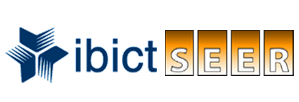BREVES CONSIDERAÇÕES SOBRE A APROXIMAÇÃO ENTRE FILOSOFIA E LITERATURA NO PENSAMENTO DE ARTHUR DANTO
DOI:
https://doi.org/10.30611/33n33id94073Keywords:
Danto, filosofia, literatura, ciência, arteAbstract
O filósofo da arte, Arthur Danto, propõe um sistema filosófico no qual a questão de saber o que é arte exerce uma função estrutural. No entanto, o que propomos aqui é uma espécie de recuo que se volta a uma questão de fundo: o que Danto entende por filosofia? Visto que o percurso, oferecido pelo autor, para responder à questão, passa pela aproximação entre filosofia e literatura, tentaremos explorar os limites entre essas duas práticas textuais e expor os passos argumentativos através dos quais Danto pretende devolver à filosofia a complexidade que é aplainada pela prática acadêmica/filosófica da contemporaneidade, ao aproximar-se demasiadamente do modelo estabelecido pela prática científica. Para tanto, será necessário explorar – tanto na filosofia, quanto na literatura – o estatuto do estilo, o papel da semântica e a centralidade da figura do leitor, tomado como sujeito real no qual o texto realiza seu caráter transfigurativo. Por fim, não obstante a grande importância atribuída pelo autor à aproximação entre filosofia e literatura, a tarefa que se impõe é a de saber se restam, ainda, elementos característicos capazes de distingui-las.
References
CHATEAU, D. La Question de la question de l'art: note sur l'esthétique analytique (Danto, Goodman et quelques autres). Saint-Denis: Presses universitaires de Vincennes, 1994.
DANTO, A. O mundo da arte. Trad. Rodrigo Duarte. Artefilosofia. n 1. UFOP. 2006.
DANTO, A.. Após o fim da arte: A Arte Contemporânea e os Limites da História. Tradução de Saulo Krieger. São Paulo: Odysseus Editora, 2006.
DANTO, A.. A Transfiguração do lugar comum. Tradução de Vera Pereira. São Paulo: Cosac Naify, 2010.
DANTO, A. O Descredenciamento filosófico da arte. Trad. Rodrigo Duarte. Belo Horizonte: Autêntica Editora, 2019.
DANTO, A.. Andy Warhol. Icons of America. Connecticut: Yale University Press, 2009.
Downloads
Published
Issue
Section
License
Copyright (c) 2024 Veronica Ferreira Bahr Calazans

This work is licensed under a Creative Commons Attribution-NonCommercial-NoDerivatives 4.0 International License.
Authors who publish in this journal agree to the following terms:
- Authors retain the copyright and grant the journal the right of first publication, with the work simultaneously licensed under the Attribution-NonCommercial-NoDerivatives 4.0 International (CC BY-NC-ND 4.0) License, which allows the non-commercial sharing of work, without modifications and with acknowledgment of authorship and initial publication in this journal.
- Authors are authorized to take additional contracts separately, for non-exclusive distribution of the version of the work published in this journal (eg publish in institutional repository or as a book chapter), with acknowledgment of authorship and initial publication in this journal.
- Authors are allowed and encouraged to publish and distribute their work online (eg in institutional repositories or on their personal page) at any point before or during the editorial process, as this can generate productive changes as well as increase the impact and citation of published work (See The Free Access Effect).



















